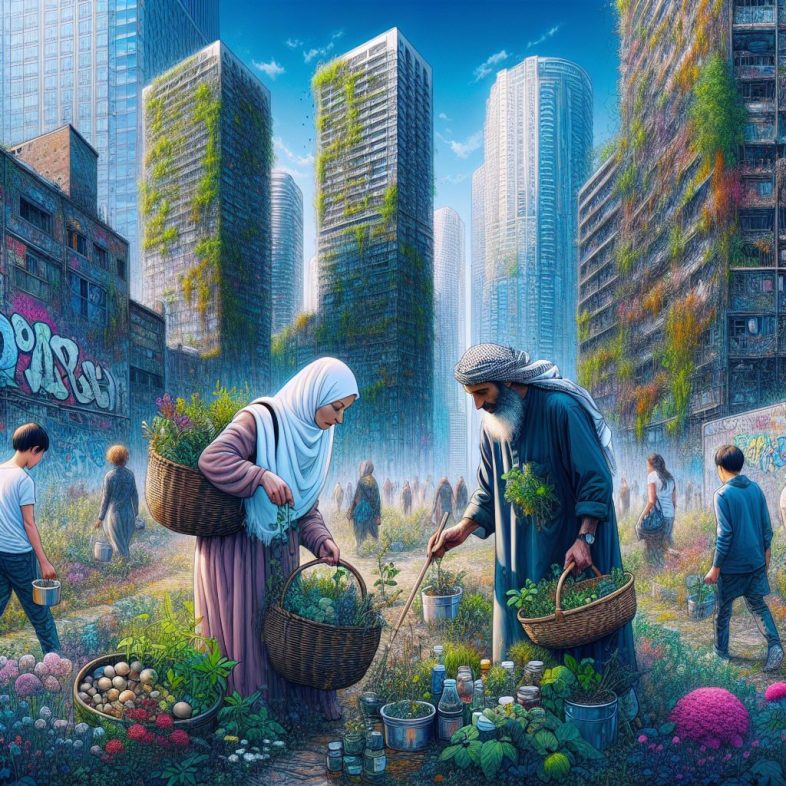Chicago is known for its towering skyscrapers, bustling streets, and deep-dish pizza. But the Windy City has an unexpected side that’s waiting to be explored – urban foraging. It’s a practice that brings us closer to nature, provides a sustainable source of food, and can be quite an adventure. You don’t have to go far into the wilderness to find a wealth of edible plants; they’re growing right here in the corners and crevices of our city.
Key Points
-
Urban foraging in Chicago can yield as many as 80 different edible plants.
-
Foraging provides a sustainable way to source local and organic food.
-
Commonly found edibles include dandelions, lamb’s quarters, and purslane.
-
It’s essential to forage responsibly, respecting the law and plant ecosystems.
-
Foraging is not just about food; it’s a sensory experience that connects us with our environment.
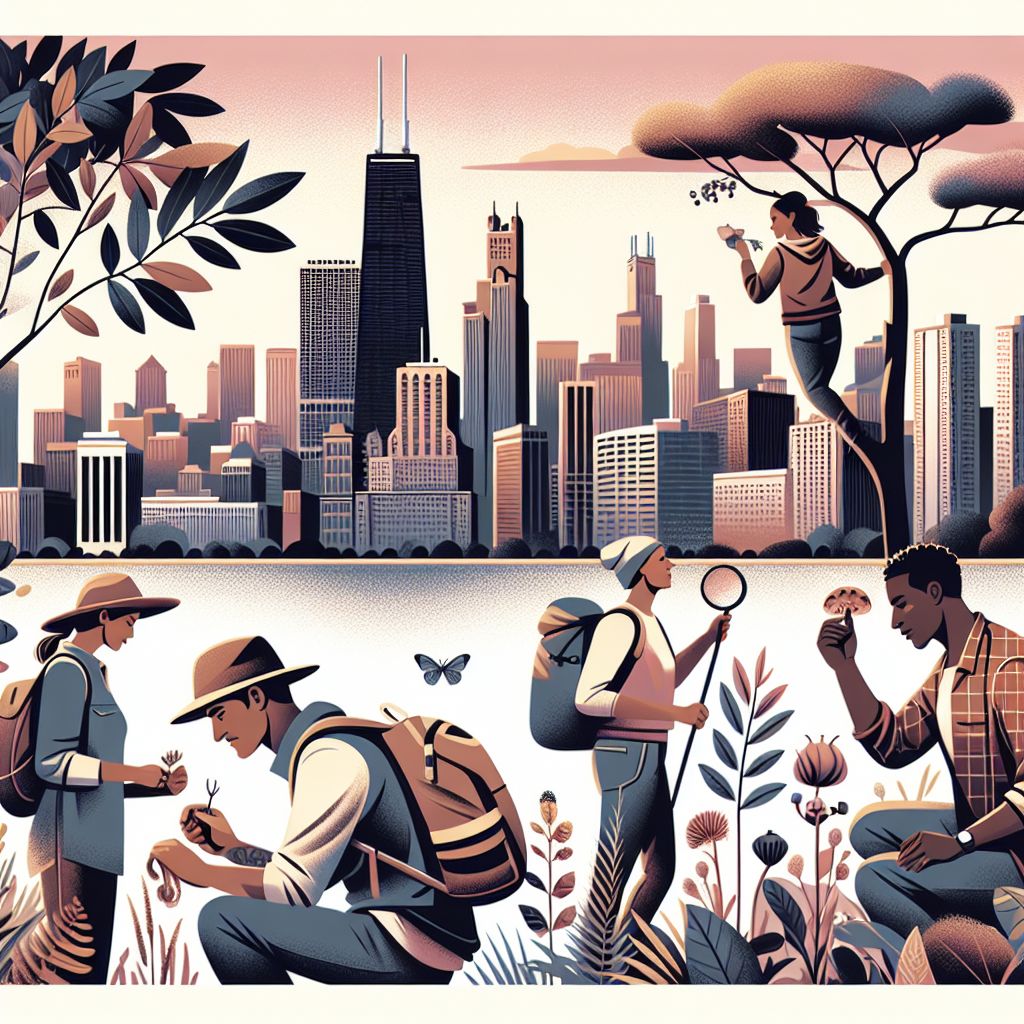
Uncover the Urban Bounty of Chicago
Chicago’s urban landscape is surprisingly fertile ground for foragers. With the right knowledge, you can uncover a diverse array of plants that are not only edible but delicious and nutritious. From the green patches of our city parks to the cracks in the sidewalk, nature has a way of asserting itself, providing us with food sources that many people overlook.
The Appeal of Urban Foraging
There’s something exciting about foraging in the city. It’s like a scavenger hunt, finding food in the most unexpected places. It’s also a way to be self-sufficient, getting your food straight from nature. Plus, foraging in the city can lead to healthier eating. Many wild plants are more nutritious than what you find in the store. And they don’t come with pesticides or the environmental impact of being shipped long distances.
However, the benefits extend beyond the table. Foraging can be a group activity, gathering individuals to share their wisdom and food. It is a step towards independence and a declaration about how we decide to interact with our surroundings.
Foraging Legally and Safely
Before you start picking, it’s important to know the rules. In Chicago, as in many cities, there are laws regarding foraging in public spaces. It’s essential to research and understand these regulations to ensure you’re foraging legally. Additionally, safety is paramount. Always be certain of a plant’s identity before consuming it, as some edibles have poisonous look-alikes.
First and foremost, it’s crucial to forage in a sustainable way. This involves only taking what you’ll use and avoiding overharvesting. We have a duty to make sure these plants are still around for future foragers.
Discover the Edible Plants of Chicago’s Streets
Let’s explore some of the most common edible plants you can find in the city of Chicago. You might be shocked by the amount of food that’s right under your nose.
Dandelions: More than Just a Weed
Most people see dandelions as nothing more than a nuisance, but they’re actually a versatile and nutritious plant. You can eat every part of a dandelion, from the roots to the bright yellow flowers. The leaves are great in salads or sautéed as a green. The roots can be roasted and ground to make a coffee substitute, and the flowers can be used to make syrups or wine.

Lamb’s Quarters: The Superfood You’ve Never Heard Of
Have you ever come across a plant that tastes like spinach but isn’t spinach? That’s lamb’s quarters for you. They’re usually found in gardens and along pathways, and are packed with vitamins A and C, calcium, and iron. You can eat them raw in salads, or cook them like you would spinach. When foraging for lamb’s quarters, make sure to look for the dusty coating on the leaves. That’s how you know you’ve got the right plant.
Example: A simple lamb’s quarters pesto can be a delicious way to incorporate this wild green into your diet. Just blend the leaves with garlic, nuts, parmesan cheese, and olive oil for a tasty spread or pasta sauce.
Remember, foraging isn’t just about picking plants. It’s about being aware of your surroundings and engaging with the environment. So, let’s step outside, learn to identify these urban treasures, and experience the joy of finding food in the wilds of the city.
Purslane: A Crispy Addition
Often ignored and growing in the cracks of sidewalks and abandoned lots, purslane is a succulent plant. Its leaves have a crunchy texture and a slight lemony flavor, making it a great addition to a salad or stir-fry. It’s loaded with omega-3 fatty acids and antioxidants. Just be sure you’re picking the right plant, as there are some that look similar but aren’t safe to eat.
Foraging: A Sensory Adventure
Foraging is a feast for the senses. You’ll use your eyes, hands, and even your nose to determine which plants are safe to eat and which aren’t. To forage effectively, you need to use all your senses. This not only helps you select the right plants, but also allows you to fully immerse yourself in the environment.
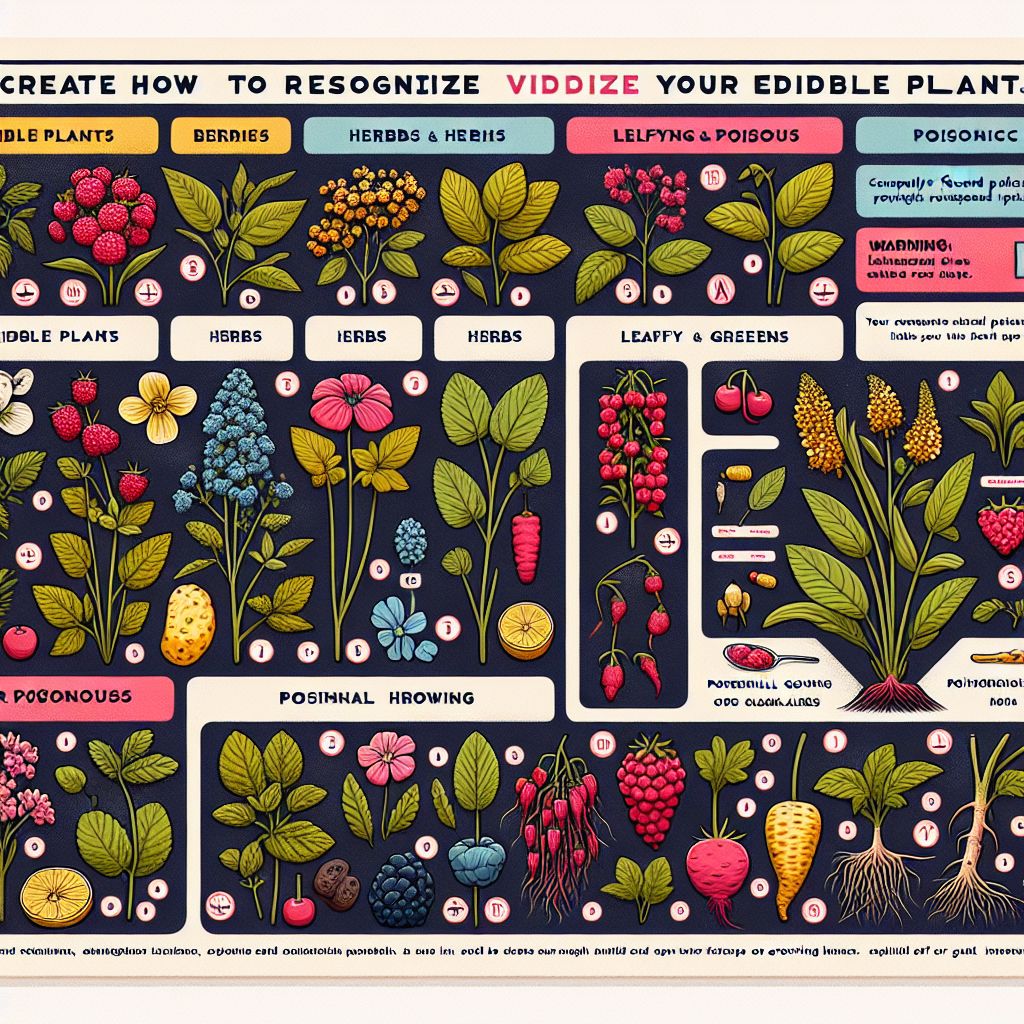
How to Recognize Edible Plants
It’s essential to know what edible plants look like. Pay attention to the shape, color, and environment of the plant. Books and apps are useful, but the best way to learn is from someone who knows what they’re doing. Look for local classes or guided walks to learn in person.
-
Keep an eye out for the leaf patterns and the structures of plants.
-
Pay attention to the color and texture of plants.
-
Take note of the environment – some plants like the shade, others need direct sunlight to grow.
Keep in mind, some edible plants have toxic doppelgängers. It’s worth it to learn these differences. For instance, wild garlic and wild onion are edible, but they have look-alikes that can be harmful if eaten. Always double-check with a trusted source before you eat any foraged item.
Let Your Senses Lead the Way
When foraging, your sense of touch and smell can be very helpful. Many edible plants have a specific smell when their leaves are crushed, such as wild mint or lemon balm. The texture of a plant can also help you identify it; for instance, the leaves of lamb’s quarters have a distinct dusty feel. These sensory hints can help you choose the right plants to forage.
However, keep in mind that while smell and feel can be useful, they should never be your only way to identify something. You should always double-check with what you see.
Guidelines for Responsible Foraging
Foraging isn’t a free-for-all. We have to follow certain guidelines and ethics to make sure we’re not damaging the environment or breaking the law.
Guidelines for Foraging
When foraging, it’s important to be respectful of both nature and property rights. If you’re foraging on private property, always ask for permission first. In public spaces, be aware of any community guidelines that may be in place. Only take what you can use, and make sure to leave enough for others, including wildlife.
Foraging with Foresight
As you forage, do so in a way that allows the plant to continue to grow. For example, if you’re picking berries, don’t strip the entire bush. And if you’re digging up roots, be sure to fill in the hole afterwards. It’s about being a steward of the land, not just a consumer.
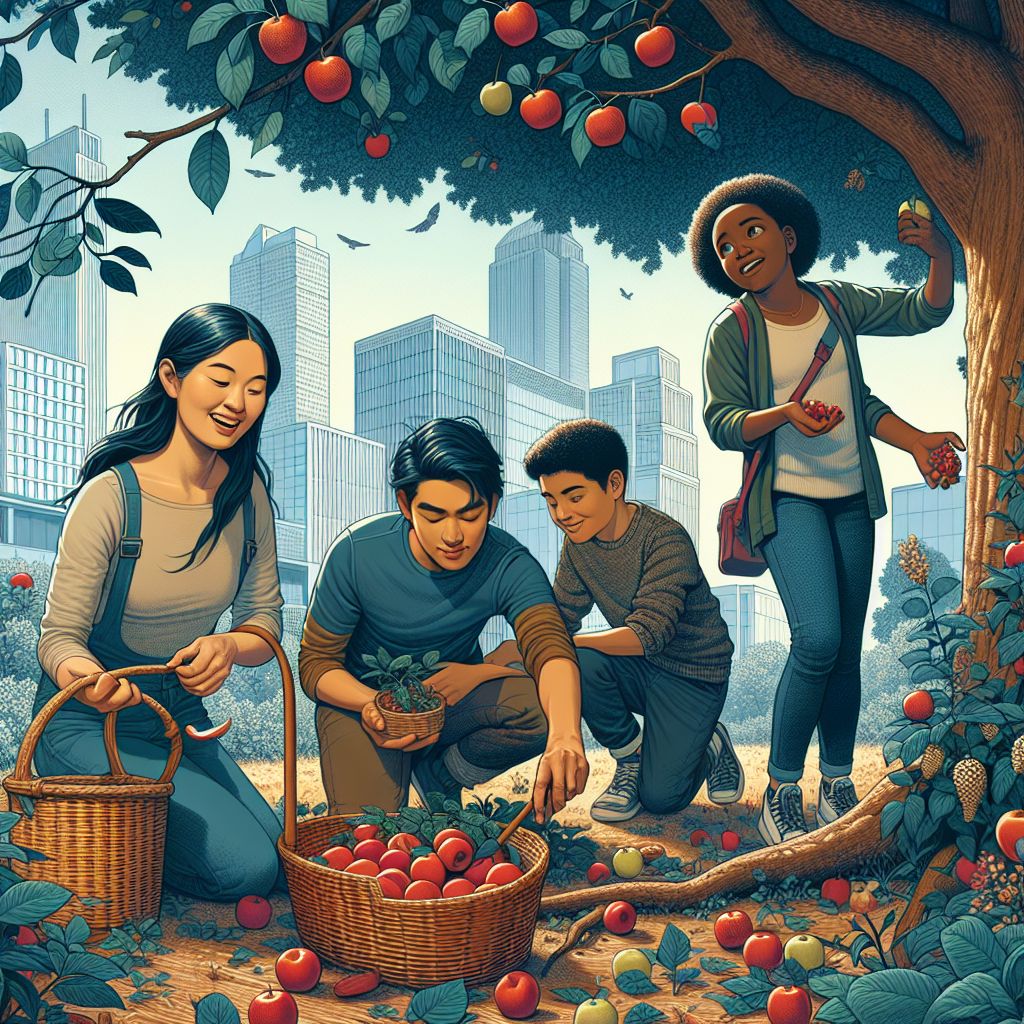
Urban Foraging: A Delicious Adventure
There’s nothing quite like the thrill of not just finding, but also eating, the fruits of your urban foraging labor. It’s truly rewarding to cook with ingredients you’ve gathered with your own two hands.
Turning Weeds into Gourmet Dishes
With a little imagination, everyday weeds can be turned into gourmet dishes. Dandelion greens can be quite bitter, but if you blanch them and toss them in a warm vinaigrette, they become a classy salad. Nettles, when cooked, lose their sting and can be used in place of spinach in soups and pastas.
Feel free to get creative. A lot of wild edibles can be swapped into recipes instead of their farmed counterparts. Foraging can introduce a whole new world of tastes and textures into your cooking.
How to Keep Your Foraged Goods Fresh
Once you’ve gathered your wild foods, you’ll need to store them properly. Berries can be frozen, herbs can be dried, and many items can be pickled. By preserving your foraged items, you can enjoy them well beyond the foraging season.
What You Need to Forage in the City
Before you start foraging, you’ll need to do a little prep work. A foraging guidebook or app that’s specific to the Midwest will come in handy. You should also bring a small gardening shovel, gloves, and a basket or bags to collect what you find.
Before you go foraging, plan your route. Look for community gardens, nature trails, and even alleys that have been taken over by plants. These are all good places to find edible plants in the city. Just make sure you’re not trespassing and that you’re following the law.
Getting Around and Tools for City Foraging
City foraging in a place like Chicago requires a mix of street smarts and nature knowledge. To get around the concrete jungle and find the hidden green treasures, you’ll need a few tools and techniques under your belt. Let’s get ready and map out the strategy for your next city foraging adventure.
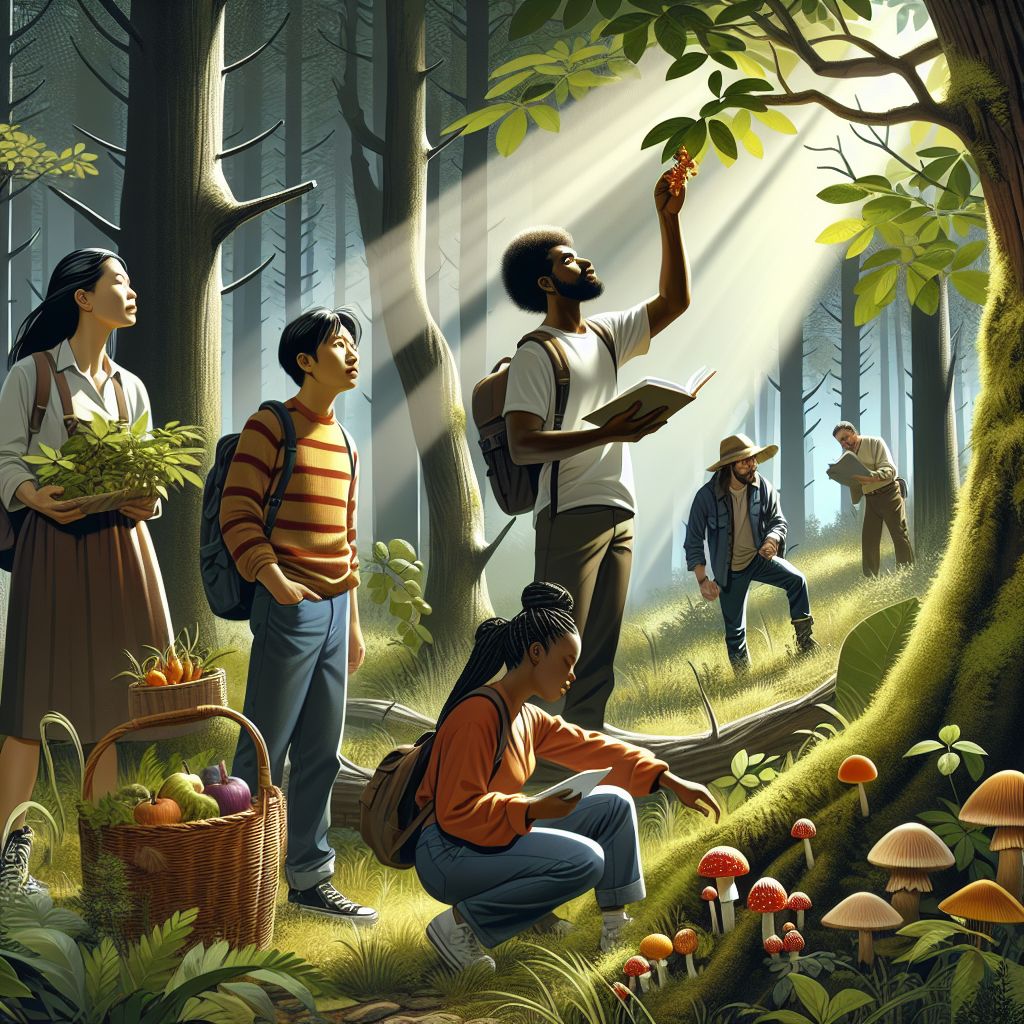
Finding the Best Foraging Spots
Chicago is a big city with plenty of places to forage. You’ll want to start by making a map of where you might find edible plants. Look for public parks, community gardens, and paths along the river. You can use the internet to find places where other people have found edible plants. There are even apps like Falling Fruit that can help you find places where people have seen edible plants in the city. But, make sure you check the local rules to make sure you’re allowed to forage in these places.
Must-Have Foraging Tools
Planning a foraging adventure? Be sure to come prepared. Here’s what you should pack:
-
Bring along a field guide or a foraging app that’s specific to Chicago
-
Wear a sturdy pair of gloves to keep your hands safe
-
Use a digging tool to harvest roots
-
Have bags or baskets ready to hold your foraged treasures
-
Carry snips or scissors to cut herbs and greens
With this gear, you’ll be all set to forage in a way that’s both efficient and responsible, making sure that you can gather edibles without causing harm to the plants or their environment.
Commonly Asked Questions
Foraging, especially in a city, can be confusing and full of questions. Here are some of the most frequently asked questions to help you forage with confidence and safety.
What Legal Issues Should I Keep in Mind?
Remember that foraging in Chicago’s parks and county forest preserves is against the law. Only forage in areas where you’re permitted to, like some public lands with permissions or private property with the owner’s approval. Also, be mindful of any endangered species and don’t forage plants that are protected or at risk.
Can Poisonous Plants Resemble Edible Ones?
Yes, they can. It seems that for every edible plant, there’s a look-alike that’s not so good for you. For example, wild carrots (also known as Queen Anne’s lace) are good to eat, but they look a lot like the poisonous hemlock. That’s why it’s so important to identify plants correctly. Don’t eat anything unless you’re absolutely sure what it is.
How Frequently Should I Forage in the Same Place?
Remember to respect the environment. Foraging over and over in the same place can exhaust resources and harm the environment. Try to diversify your foraging locations and allow the areas to recover. A useful guideline is to return to the same place no more than once every few weeks during the growing season.
Can I Sell the food I Find?
Foraging for personal use is one thing, but selling your finds is another. If you plan to sell the edibles you forage, you’ll need to comply with local health regulations and food safety laws. Before you turn your foraging into a business, it’s best to consult with a legal expert.
Do Foraging Groups or Tours Exist in Chicago?
Indeed, becoming part of a foraging group or registering for a tour can be an excellent learning opportunity. Organizations such as the Illinois Mycological Association provide mushroom foraging events, and local foragers might organize walks through the city’s parks. These events are wonderful chances to gain knowledge from seasoned foragers and meet a community of people with similar interests.
